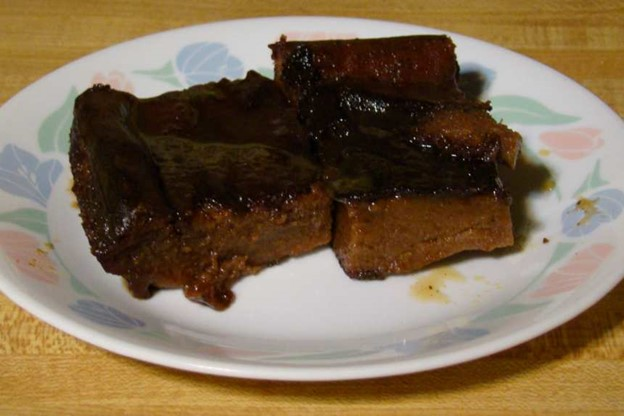





 15
15




Blog: 5 Acres & A Dream
Books: Kikobian Books | Permies Digital Market
 19
19




 8
8




Invasive plants are Earth's way of insisting we notice her medicines. Stephen Herrod Buhner
Everyone learns what works by learning what doesn't work. Stephen Herrod Buhner
 9
9




 10
10




 17
17




"How fleeting are all human passions compared with the massive continuity of ducks.“ — Dorothy L. Sayers
 12
12







Blazing trails in disabled homesteading
 9
9










 9
9




Tereza Okava wrote:
The other thing I always do is take the last one, when it's finally soft and perfectly ripe and could be eaten with a spoon, and throw it in the freezer. On the first hot day, I take it out, let it defrost, and eat it with a spoon, a wonderful, squishy frozen treat from the fall.
Read about Permies.com site basics in this thread: https://permies.com/t/43625/Universal
 7
7





 6
6




 6
6




greg mosser wrote:if she’s only got the one fuyu, they may be seedles, since they tend to be when grown in isolation.
Tereza Okava wrote:Leigh, what are the seeds like in those persimmons?
Blog: 5 Acres & A Dream
Books: Kikobian Books | Permies Digital Market
 9
9




 8
8




Tereza Okava wrote:That kind of persimmon you can eat before they get super squishy (in other words: the hachiya kind, the kind that's not squat and is more "pointy" than "square" is often crazy astringent and then suddenly overripe, while the fuyus like yours are usually ripe when they're orange) so I find I can do more with them.
Blog: 5 Acres & A Dream
Books: Kikobian Books | Permies Digital Market
 13
13




Joy to You
 6
6




 6
6




 8
8




Other people may reject you but if you lie in the forest floor for long enough the moss and fungi will accept you as one of their own!
 4
4




 8
8




 11
11




 6
6




 9
9




 8
8











 5
5




Leigh Tate wrote: (probably another reason why I chose them, because our frosts don't cooperate with our native persimmons)
 5
5




Blog: 5 Acres & A Dream
Books: Kikobian Books | Permies Digital Market
 3
3




greg mosser wrote:for what it’s worth, leigh, i have lots of native persimmons that do not at all require frost to get ripe (they start ripening in september, long before we get frost here). i suspect the idea that the frost is necessary just stems from the fact that many hold their fruit into winter/freezing times before dropping them. so the frequently late drop and cold weather get conflated.
not that this necessarily helps you now.
Blog: 5 Acres & A Dream
Books: Kikobian Books | Permies Digital Market
 4
4




 4
4




Mary Cook wrote:I just want to underline that the idea that persimmons need a frost to ripen is a myth, no doubt engendered by the fact that many trees typically ripen shortly after a frost. But, I also note that different trees ripen at different times, and differ some from year to year. Picking them off the ground ALMOST ensures that they will be ripe but I've learned to avoid that, unless I have a tarp under the tree or clean lawn, as contamination can lead to getting the runs, at least from raw fruit. USUALLY, a fully ripe persimmon is bright orange, almost translucent, and soft. And pulls easily from the tree
Blazing trails in disabled homesteading
 3
3




 6
6




 3
3




Fred Tyler wrote:If anyone has extra seeds, I will plant them here at Wheaton Labs.
Blog: 5 Acres & A Dream
Books: Kikobian Books | Permies Digital Market
 5
5




 6
6





 6
6











 3
3





Blazing trails in disabled homesteading
 3
3




L. Johnson wrote:Trim the "gaku" what is that in English? stem leaves?
Blazing trails in disabled homesteading
 1
1





|
Get out of my mind! Look! A tiny ad!
Freaky Cheap Heat - 2 hour movie - HD streaming
https://permies.com/wiki/238453/Freaky-Cheap-Heat-hour-movie
|









